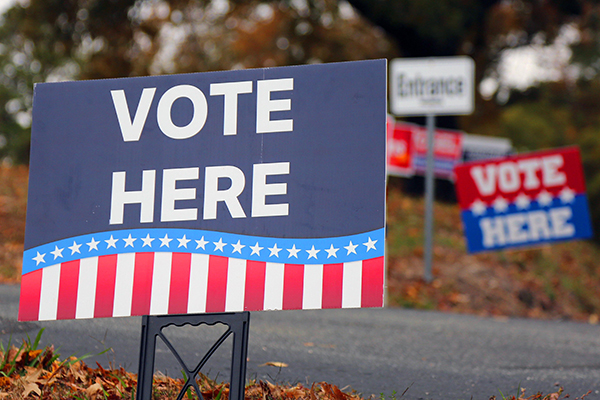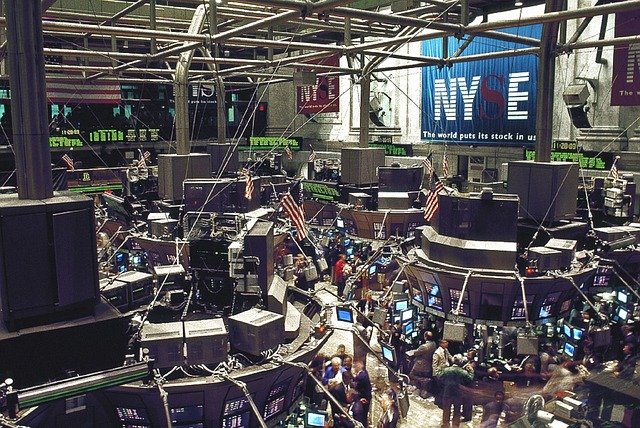2017 was arguably the calmest year ever for the stock market. It was the first year in which the SPX total return was positive every single month (the closest was 1995 which had 11 positive months and a slightly negative October). The stock market has set new records for the most consecutive days without a 5% correction (broken on Monday the 22nd), a 3% correction and even a 2% correction. The CBOE Volatility Index, the VIX, averaged about 11 this year, the lowest since the index launched in 1993, and more than a full point below the 12.39 average, the record before this year, also in 1995.
The credit for this unbelievable stretch of serenity is due largely to the synchronized global expansion. The global PMI for December 2017, a measure of manufacturing activity, was the highest since 2011. Additionally, 2017 was the first time in over ten years that there were no interest rate cuts by any central bank in the top ten developed markets. Now, of course, Japan and the ECB are still stimulating with their version of quantitative easing, but it is not insignificant that there were no rate cuts.
Further credit goes to the stability of the US economy and the improvement in earnings throughout the year—earnings growth year-over-year for the first quarter was 16%, for the second quarter, 19.7%, and the third, 20.2%. Growth in the fourth quarter is estimated to be in the 12% range. Finally, optimism surrounding President Trump’s economic agenda, highlighted by the passage of the tax bill a month ago, was a big driver in the first quarter and fourth quarter.
So where does that leave us for 2018?
Stocks and the Economy
Well, the first 5 trading days often foretell the year, and they were very good (73% of the time the whole year is positive if the first 5 days are). A better indicator is the first month of the year. Not only is the month of January higher, it is one of the best starts to a year in the last 50 years. When January is higher, the stock market finishes the year in positive territory 82% of the time. More importantly than historical statistics are the facts that would suggest there is not a recession anywhere in sight; the passage of the tax bill should boost earnings for the next couple quarters; GDP growth both in the US and globally remains in a “Goldilocks” pattern, that is, not too hot and not too cold, and inflation remains muted despite the US being near full employment (unemployment is at a 17 year low).
The New Tax Law
Much has been made over the new tax law and it certainly is far too complicated to discuss in a letter of this size. However, it is worth mentioning the perceived impact on the markets of a few of the major items. The corporate tax rate cut, from 35% to 21%, is most significant. The stock market rally of the last few months was a big beneficiary of this provision. There are certainly sectors that will benefit more from this tax break than others. For example, technology companies and big health care firms may not see a big benefit because so much of their business is international. Financials and industrials, on the other hand, stand to benefit a lot as most of their business is domestic (they also stand to benefit from deregulation). And remember, a company has to be making money to pay taxes—while small companies stand to benefit because the lack international operations, as a whole they tend to be far less profitable than large businesses. The other major provision that should impact the markets is the repatriation of foreign cash. There is a lot of speculation as to what companies will do with this cash. First off, they are going to have a big tax bill this year, but then that frees up a lot of money. Personally, I think it is more likely they will use it for buybacks, one-time dividends, and M&A activity. The concept that it will be used for capital spending is a nice one, but the truth is with interest rates so low, it is unlikely companies have been foregoing attractive projects which require big, cash outlays. Especially, the companies that have a significant amount of cash overseas. While there should be an increase in CapEx at the margin, I disagree with the notion that repatriation is going to be overly stimulative. As for bonds, especially munis, there may be a short term rattling of the market, but the truth is that the individual tax rates did not fall enough to make munis unattractive, and then add in the loss of deductions like SALT and mortgage interest for some, and investors will still want tax-free income. The issuance of munis will be affected due to the tax law’s impact on certain types of bonds, but this may result in lower supply, and therefore more demand for the bonds in existence.
Interest Rates
The yield curve has been flattening this year. This is a widely watched recession indicator as once the curve goes inverted—meaning short term yields are higher than long term yields, a recession often follows (although not always). Of particular note in 2017, the US Federal Reserve not only raised interest rates three times, but also began to slowly reduce, very slowly, the debt on its balance sheet. The impact on the 2yr Treasury has been dramatic in the last few months as the yield has ballooned to just over 2% (from a recent low of 1.25% in September). The impact on the long end of the curve has been less significant. The 10yr rate is the highest in three years at 2.62%, but the 30yr rate has barely budged. Long term rates are more impacted by the general outlook for inflation, rather than anything the Fed does. It is noted that the Fed has never had a balance sheet this massive before, nor has it ever needed to reduce the buying of Treasuries in a scripted way. Therefore, the outcome of “Quantitative Tightening” is unknown and not predictable. A better indicator than an inverted (or nearly so) yield curve is when the Fed Funds rate rises over the level of the cyclical low of the 10yr. That low was 1.36% in 2016. The Fed funds rate is currently 1.25%-1.5%, the midpoint of that range is 1.375%. So we are essentially there now. The good news is that indicator usually means a recession is 18mos away on average.
Oil Prices
The recovery in oil prices has been on a steady upward trend since the summer. The supply/demand imbalance has seemed to work itself out as US crude supplies have fallen 9 weeks in a row for a total drop of over 39m barrels. According to EIA, this is one of the largest drops in such a short amount of time. US production is expected to top 10mm barrels in 2018, a level last seen in 1970, and a level which may possibly exceed the production of Saudi Arabia. The rig count has been steadily rising and should OPEC begin to reduce the production cuts now that prices have risen, we may see oil stabilize or start falling. That would hamper inflation from rising.
Bitcoin
I have been receiving a number of inquiries about bitcoin of late. Even the young bartender in the hotel bar a month ago asked me about it once he found out I was in finance. Obviously, it is a more complicated topic to cover than the limited space here allows, so I encourage you to give me a call if you would like to dive deeper into the subject. That said, it is the Wild West out there now. The bulls would have you believe that bitcoin will be a store of value similar to gold, and that it is a currency that is not subject to the whims of government. Nevertheless, it is still a baseless currency, that has over 1300 competitors (yes, there over 1300 different cryptocurrencies in existence). It will take some time, or some impetus of legitimacy to arise, before bitcoin could be considered an investment. In the meantime, it is pure speculation and more like rolling the dice. However, the technology connected with bitcoin is blockchain. This has very real application and will likely be a groundbreaking solution to financial transaction accounting. My biggest hang-up is will bitcoin be truly revolutionary, or will it be the next Netscape, Myspace or Napster? That is, first mover companies which did not last long enough to see the benefits of their technological breakthroughs because someone else came along with a much better model. Suffice to say that as far as 2018 is concerned, it is unlikely these questions will be answered directly, but it is possible to state that the mania in bitcoin is a sign of investor euphoria—much like the tech bubble of 1999 and housing bubble of the mid 2000s.
Midterm Elections
While it seems the shock of the last election has not completely worn off yet, we are just nine months away from the next round. Midterm elections are typically tough on the party of a first term president, especially if that president’s approval rating is low. President Trump’s is extremely low. The GOP have a 24 seat majority in the House, and just a 2 seat majority in the Senate. While that seems like the Senate is more vulnerable, the GOP has just 8 seats up for election, and they are all in fairly solid GOP supporting districts; while the Democrats have 23 Senate seats up for election, a number of which are in areas that voted for President Trump. So it seems like the House may actually be a more dangerous area for Republicans. Time will tell how much economic activity comes of the tax bill, and if Congress makes any progress on an infrastructure bill. But for now, the GOP majority seems tenuous at best.
Investment Strategy
It is exceedingly difficult to time the markets. One not only has to be right about when to get out, but also about when to get back in. 2018 looks like another positive year but perhaps the last of this cycle. With unemployment low and getting lower, wage pressure is likely to show up eventually. That could cause inflation to begin to appear again in earnest, which could force the Fed to accelerate interest rate hikes. The new tariffs, courtesy of the Trump Administration, are not good, and could set off a trade war. Finally, and most significantly, 2018 looks to be the last year of global central bank easing. The US has already reversed and is starting to tighten; the ECB has reduced its QE purchases once, and is expected to reduce again and perhaps eliminate them by year end. The BOJ has also suggested it is looking to slow its purchases.
We will be looking to take some profits this year and be watching for further signs that the good times are ending, at least temporarily, in 2019. That said, we are not wavering from our long term allocation models as the coming correction may start from a level much higher than this. We still like the way international markets look, especially emerging markets. We will look for opportunities to rotate exposure from US stock to international stock. For fixed income, we actively reduced our duration (the exposure of fixed income investments to interest rates) last year. We will continue to look for opportunities in floating rate and short-term investments. The one good thing about rising rates is that when one reinvests maturing securities, one can do so at higher rates. This is a good thing for savers (bad for borrowers).





